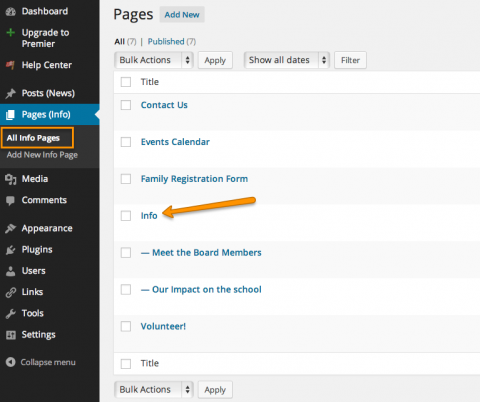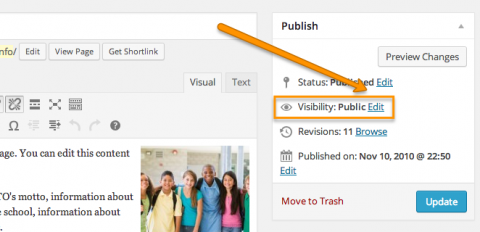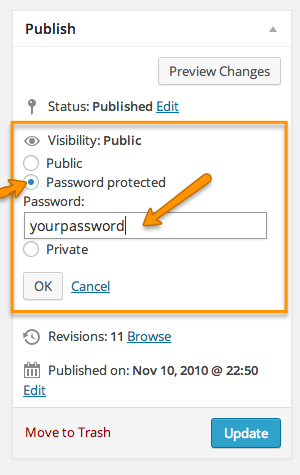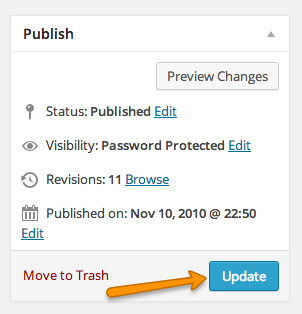How to Password Protect Individual Pages or Posts
Most PTAs and PTOs keep their website’s content public, but there are times when you might want to password protect just a few pages. Maybe some internal documents or forms, possibly a list of volunteers with contact info that you don’t want the entire internet to have access to. Things like that. This tutorial will explain how to password protect pages and posts on an individual basis. The technique is the same for Pages and Posts, we are going to demonstrate on a Page in this tutorial.
Step 1: Open the Page / Post you wish to Protect
Step 2: Click EDIT next to Visibility in the Publish Menu
Step 3: Select Your Visibility Preference
Public: This page is able to be seen by all website visitors
Password Protected: A password must be entered to view this page
Private: Only Administrators and Authorized Users can see the page
To Password Protect the page, select the PASSWORD PROTECTED option and then enter the password you would like to assign. Then click the OK Button.






